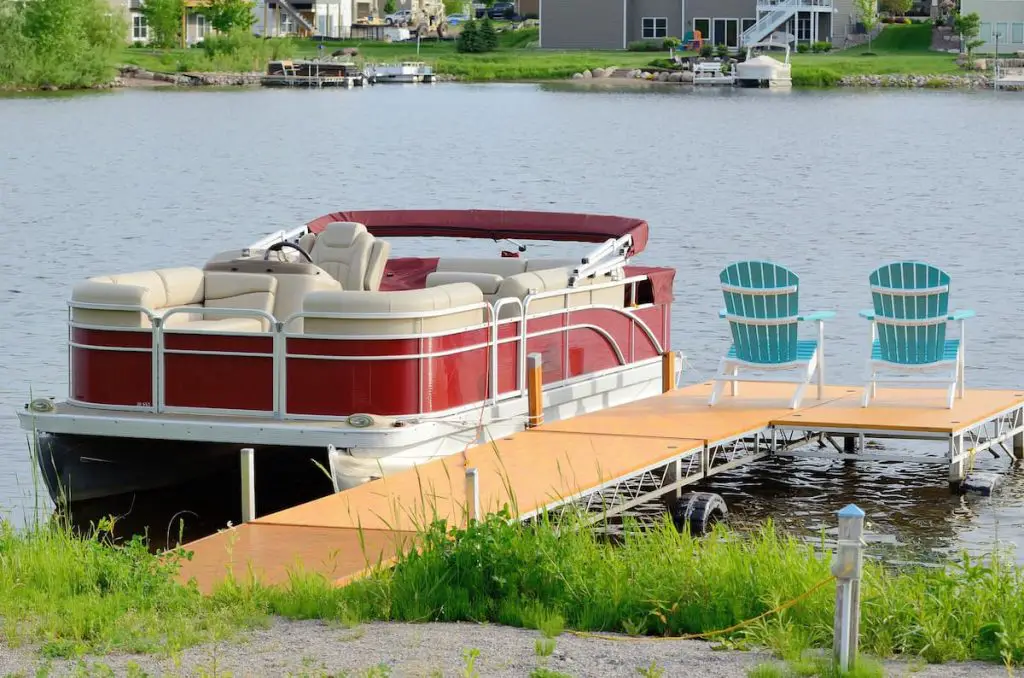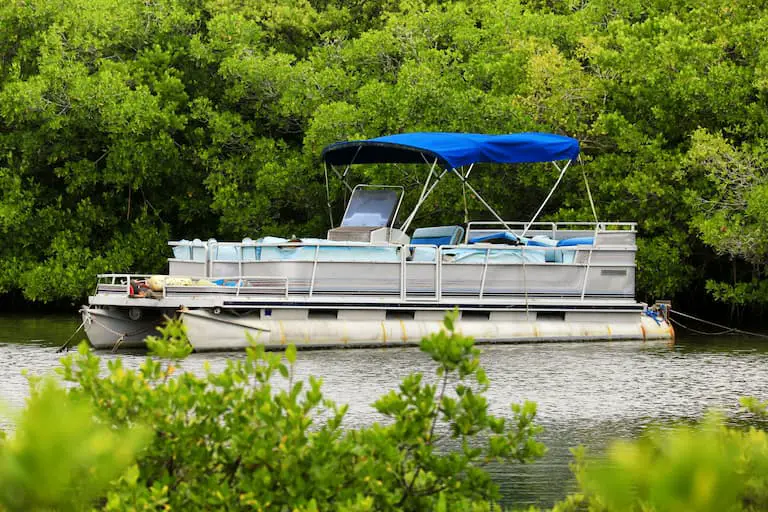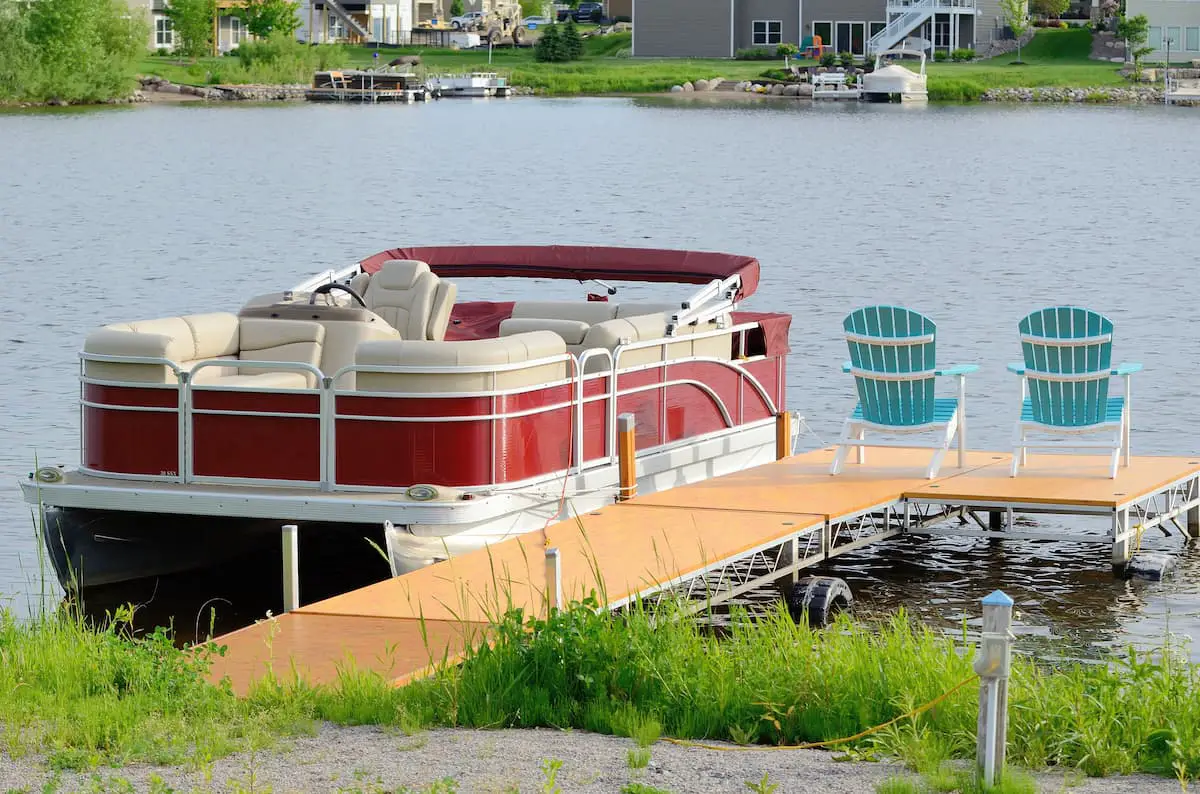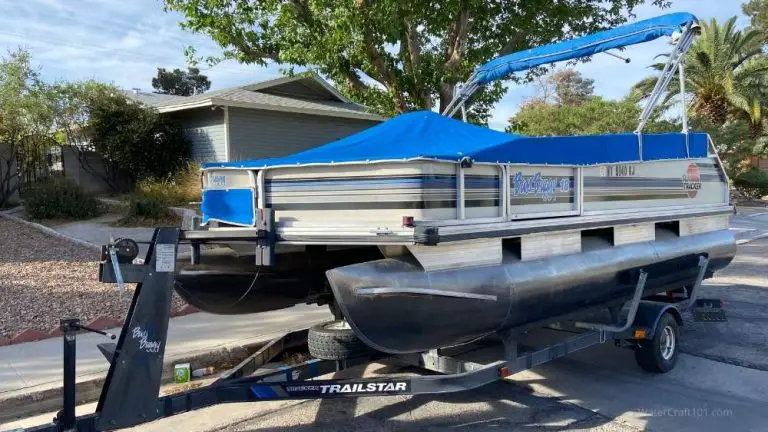11 Tips for Leaving a Pontoon Boat in the Water
If you’re like most pontoon boat owners, you probably enjoy spending as much time on the water as possible. But what do you do when it’s time to put your boat away for later use, and there’s no alternative other than leaving it in the water?
Here are 11 tips for leaving your pontoon boat in water:
- Check weather conditions ahead of time.
- Check for leaks and repair them immediately.
- Paint the bottom with anti-fouling paint.
- Ensure your boat is securely moored.
- Keep the battery charged and the engine lubricated.
- Use a cover to protect the boat from the elements.
- Use a boat lift or dock system when possible.
- Ensure you have the right insurance policy in place.
- Check your state’s boating regulations.
- Be prepared for an emergency.
- Inspect your boat regularly.
In this article, I will provide more detail on each of these tips. Read on for more insightful tricks on keeping your pontoon boat in good condition while stored in the water!

1. Check Weather Conditions: Leaving Your Pontoon in Water
Before leaving your pontoon boat in the water for an extended period, it’s essential to check the forecasted weather conditions. If strong winds or storms are expected, it’s best to remove your boat from the water to avoid damage.
Additionally, you’ll want to ensure that the water temperature is warm enough to keep your boat in good condition. If it’s frigid or freezing, your boat could sustain damage from the cold weather.
Here are a few sites you can use to check the weather conditions in your area:
2. Check for Pontoon Leaks and Repair Them Immediately
Before leaving your pontoon boat in the water for a period of time, it’s essential to check for leaks and repair them immediately. If you don’t, the leaks could worsen and cause significant damage to your boat when you’re not around.
To check for leaks, follow these steps:
- Start by checking the pontoons for any cracks or holes.
- If you find any leaks, use a sealant to repair them.
- Once you’ve fixed the pontoons and hull, move on to check the deck and other areas of the boat for leaks.
Note: If you’re not sure how to repair a particular type of leak, it’s best to consult a professional.
3. Paint the Bottom With Anti-Fouling Paint
If you’re leaving your pontoon boat in the water for an extended period, it’s best to paint the bottom with anti-fouling paint. This type of paint helps prevent barnacles and other marine growth from attaching to the hull or pontoons, which can cause damage over time.
Here’s a video that will come in handy if you need tips and tricks for painting the bottom of your boat:
Caveat: Be sure to use marine-grade anti-fouling paint on pontoon boats. Also, never apply any anti-fouling paint with a Copper(I) oxide on an outdrive or aluminum hull. Otherwise, you risk damaging the boat.
If you need copper-free anti-fouling paint, go with this TotalBoat AlumiPaint AF Pontoon Boat Bottom Paint from Amazon.com. It’s a top-rated product designed for use on pontoon boats and other types of aluminum vessels. Besides, it’s ablative, meaning it will continually release small amounts of biocide to prevent the growth of marine life under the paint film.
4. Ensure Your Pontoon Boat Is Securely Moored
When leaving your pontoon boat in the water, it’s crucial to ensure it’s appropriately moored and secure. This will help prevent damage from waves or other boats.

To moor your pontoon boat properly, follow these steps:
- Use a strong rope or chain to tie your pontoon boat to a dock, pier, or another stationary object.
- Make sure the rope or chain is long enough to allow for movement without your boat hitting the dock or other object.
- Use multiple ropes or chains if necessary.
Pro Tip: Once you’ve moored your pontoon boat, check the knots to ensure they’re secure. Otherwise, your boat could come loose and float away.
5. Keep the Pontoon Battery Charged and the Engine Lubricated
If you’re leaving your pontoon boat in the water for an extended period, it’s essential to keep the battery charged and the engine lubricated. This will help prevent damage from corrosion or lack of use.
To keep the battery charged, you can use either of the following methods:
- Connect it to a shore power source for a few hours every week.
- Use a solar charger.
To keep the engine lubricated, follow these steps:
- Remove the boat’s spark plugs and squirt a few drops of oil into each cylinder.
- Replace the spark plugs.
- Run the engine for a few minutes to distribute the oil.
6. Use a Cover To Protect the Boat From the Elements
Another good way to protect your pontoon boat while it’s in the water is to use a cover. This will help shield it from the sun, rain, snow, and other elements.
Here are a few things to keep in mind when choosing a cover for your pontoon boat:
- Material: The cover should be made from a durable material that can withstand the sun, rain, snow, and other elements.
- Size: The cover should be big enough to cover the entire boat.
- Color: The cover should be light in color to reflect the sun’s rays.
- Fit: The cover should fit snugly on the boat so that it doesn’t blow off in the wind.
Pro Tip: If you live in an area with severe weather conditions, it’s best to use a heavy-duty cover made from PVC or polyester.
Related: How To Keep A Boat Dry Under a Cover? (Complete Guide)
7. Use a Boat Lift or Dock System to Lift Your Pontoon Out of Water
Another good way to protect your pontoon boat when leaving it in the water is to use a boat lift or dock system. This will help keep the pontoon hull out of the water, which will prevent damage from corrosion or aquatic life.
Boat lifts and dock systems come in various sizes and styles, so it’s essential to choose one that’s right for your boat.
Check out an example of a boat lift for pontoon boats in the video below:
8. Ensure You Have the Right Boating Insurance Policy in Place
Before leaving your pontoon boat in the water, it’s essential to ensure you have the right insurance policy. This will help protect your boat in case of damage from the elements or other accidents.
There are a few things to keep in mind when choosing an insurance policy for your pontoon boat:
- Coverage: The policy should cover the replacement value of your boat.
- Deductible: The policy should have a low deductible so that you’re not left with a hefty bill if something happens to your boat.
- Premium: The policy should have a reasonable premium so that you don’t have to spend a lot of money to keep it in force.
9. Check State Boating Regulations For Leaving Pontoon in Water
Before leaving your pontoon boat in the water, it’s essential to check your state’s boating regulations. This will help ensure you’re following the law and that your boat is safe. For example, some states require boats to be registered and have a valid license whether currently occupied or not.

Knowing the specific boating regulations that apply to you can help you avoid a fine. In addition, it’s always best to check with your local authorities to make sure you’re following the most up-to-date rules.
10. Be Prepared for an Emergency For Pontoons Left in The Water
Before leaving your pontoon boat in the water, it’s essential to be prepared for an emergency. This means having a plan in place if something happens to your boat or you need to evacuate the area.
Here are a few things to keep in mind when preparing for an emergency:
- Know the area: Familiarize yourself with where you’ll leave your pontoon boat. This includes knowing the layout of the water and the nearest exit.
- Have a plan: Have a plan in place if something happens to your boat or you need to evacuate the area. This should include a list of emergency numbers and a map of the site.
- Insure your boat: Make sure your pontoon boat is adequately insured in case of damage or theft.
11. Inspect Your Pontoon Boat Regularly If You’re Leaving it Wet
Once you’ve left your pontoon boat in the water, it’s crucial to inspect it regularly. This will help ensure that it’s in good condition and that any damage is quickly repaired.
Here are a few things to look for when inspecting your pontoon boat:
- Leaks: Check for leaks around the pontoons, hull, and deck.
- Damage: Look for cracks, holes, or other damage to the hull or deck.
- Corrosion: Inspect the boat for any signs of corrosion, especially around metal parts.
- Aquatic life: Look for any signs of marine life, such as barnacles or seagrass, on the hull.
If you notice any damage, it’s vital to repair it immediately to prevent further damage.
Pontoon Boat in the Water – Summary
Although these tips for leaving a pontoon boat in water can save the day, it’s always best to remove your pontoon from the water if you don’t plan on using it regularly. Leaving a pontoon boat in the water, while convenient, will decrease its lifespan over time.







